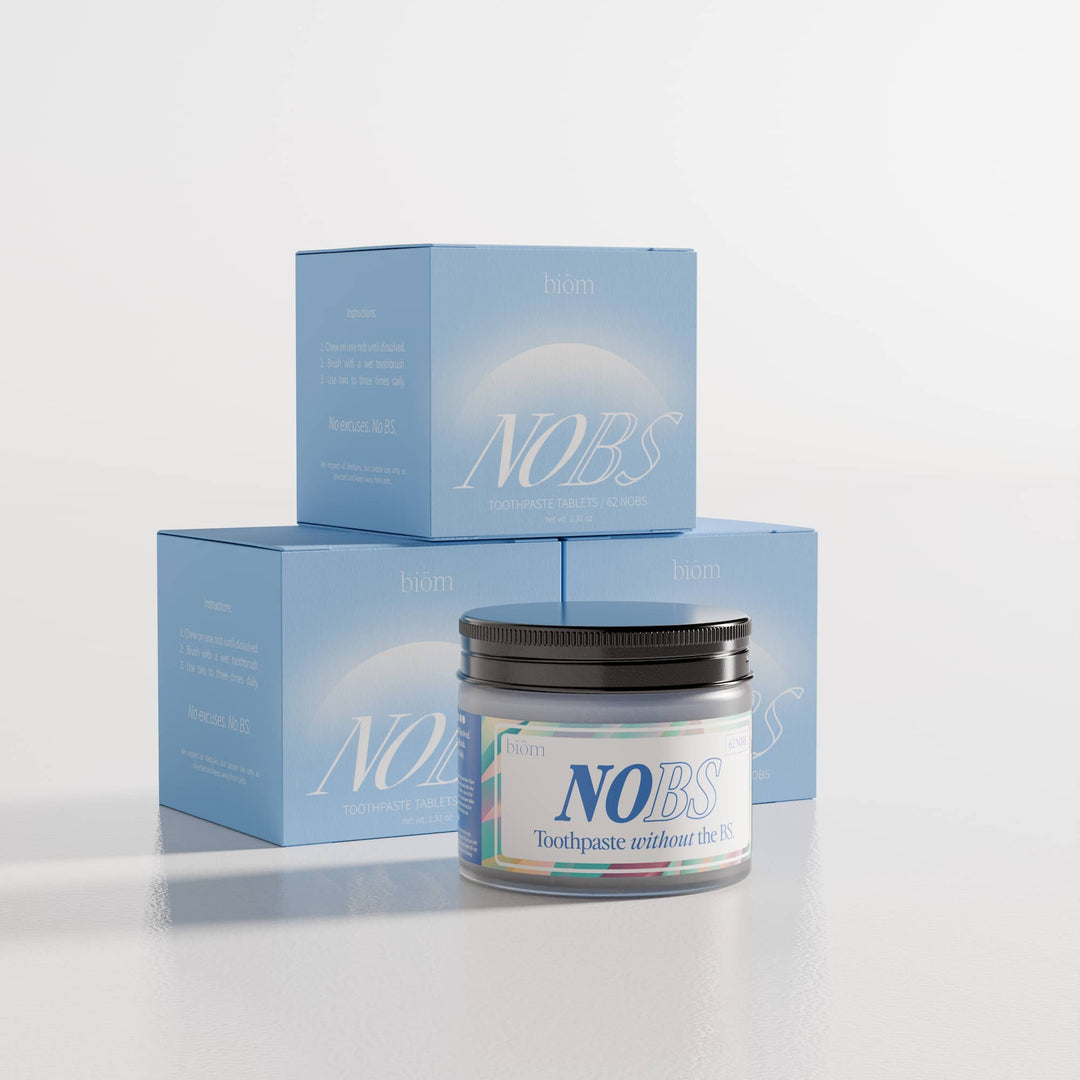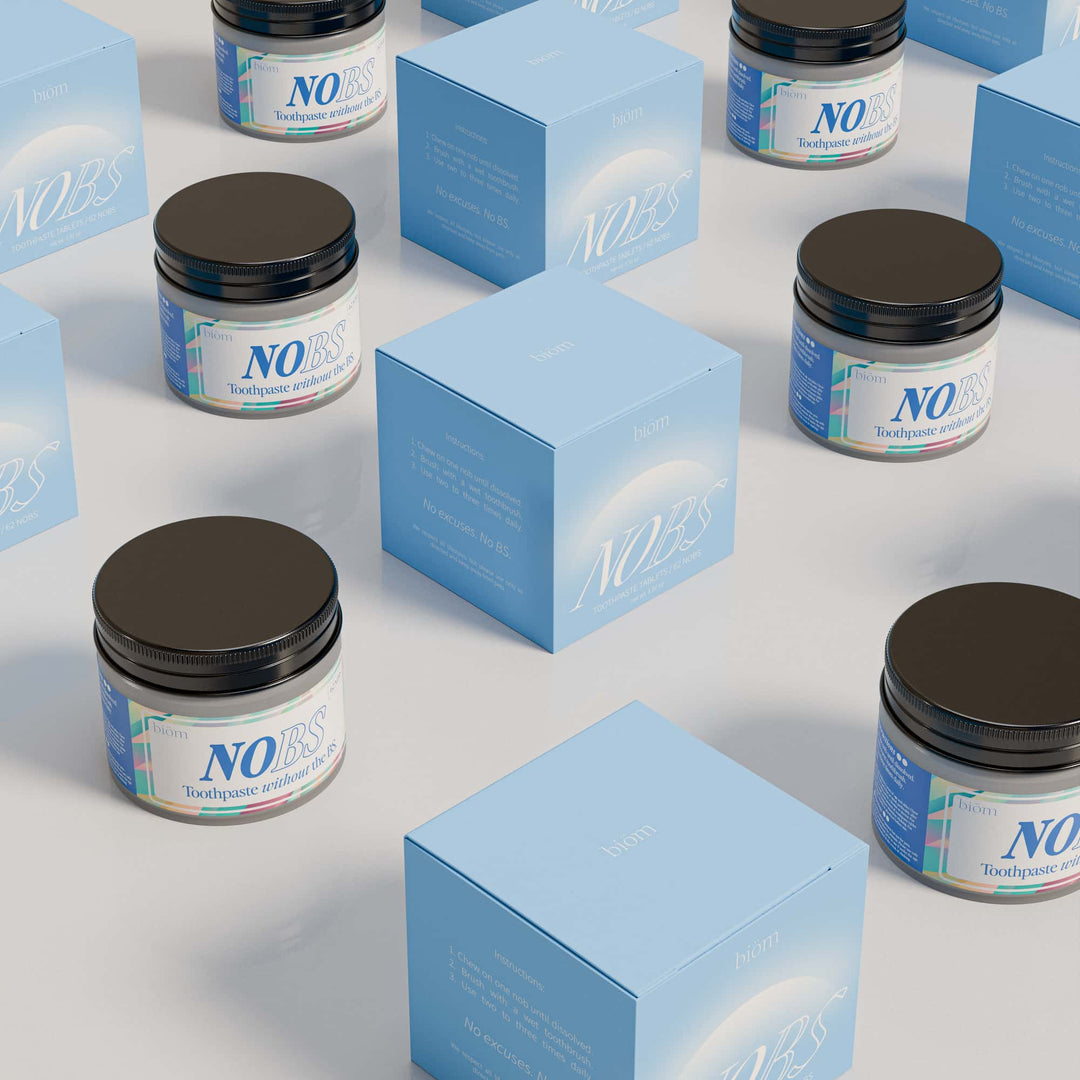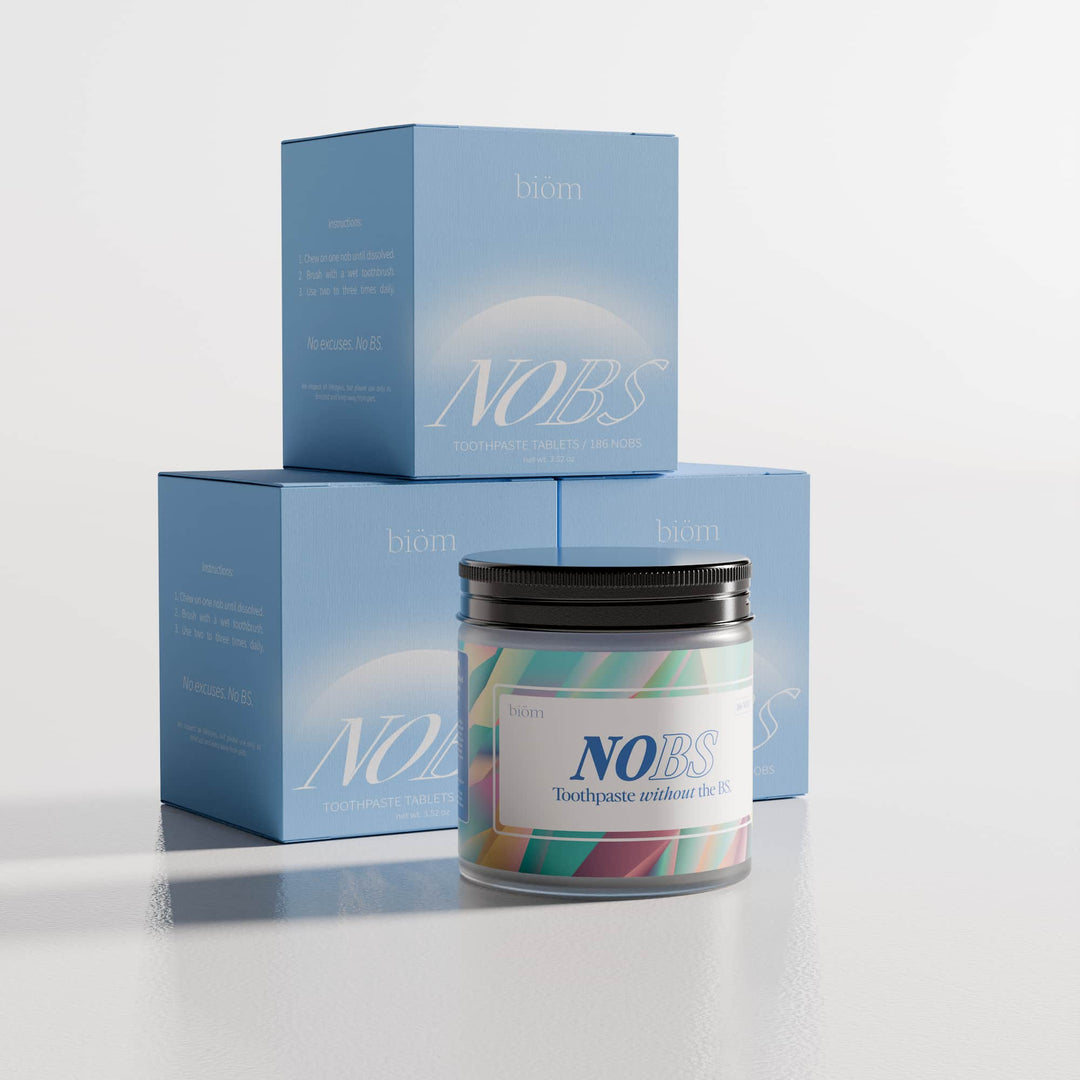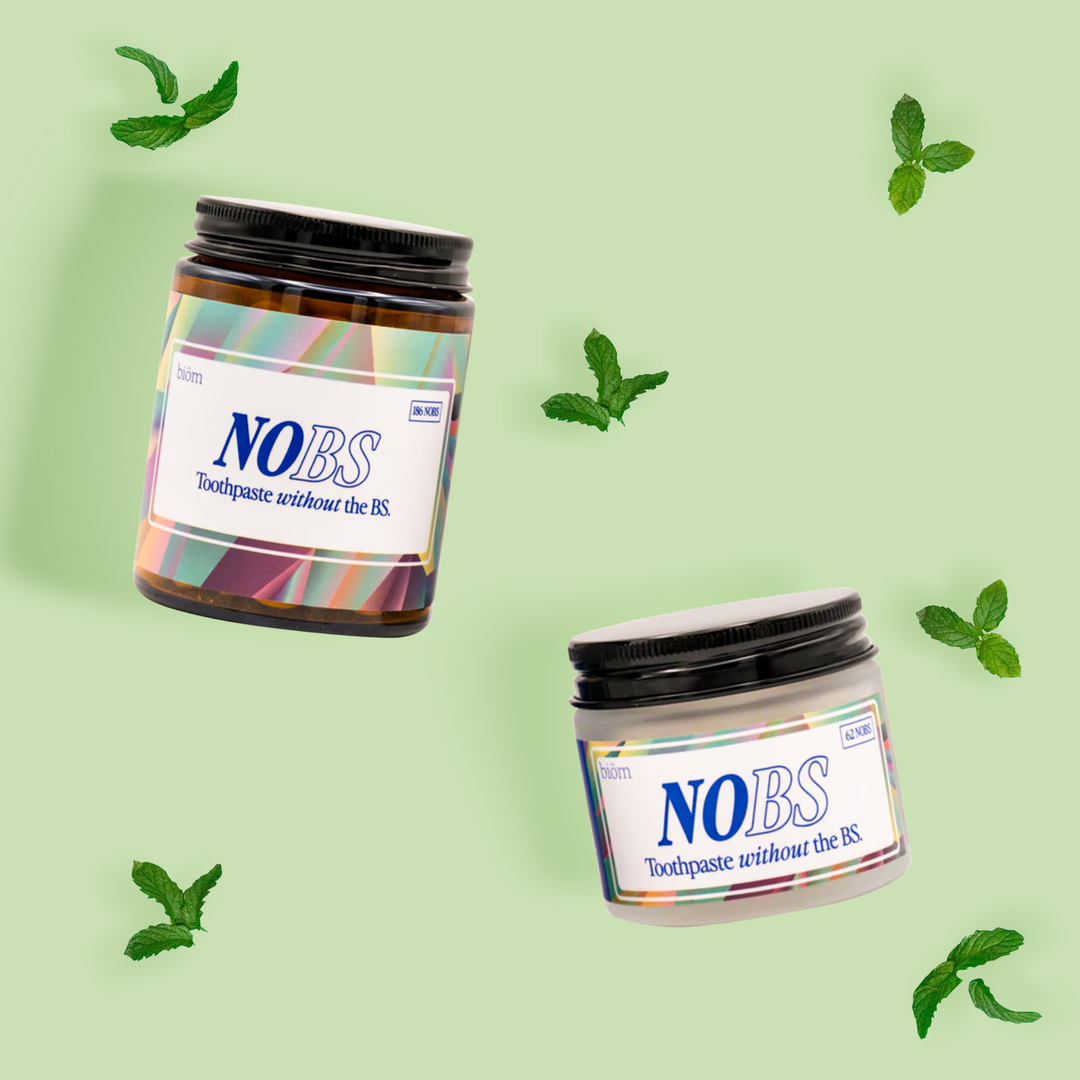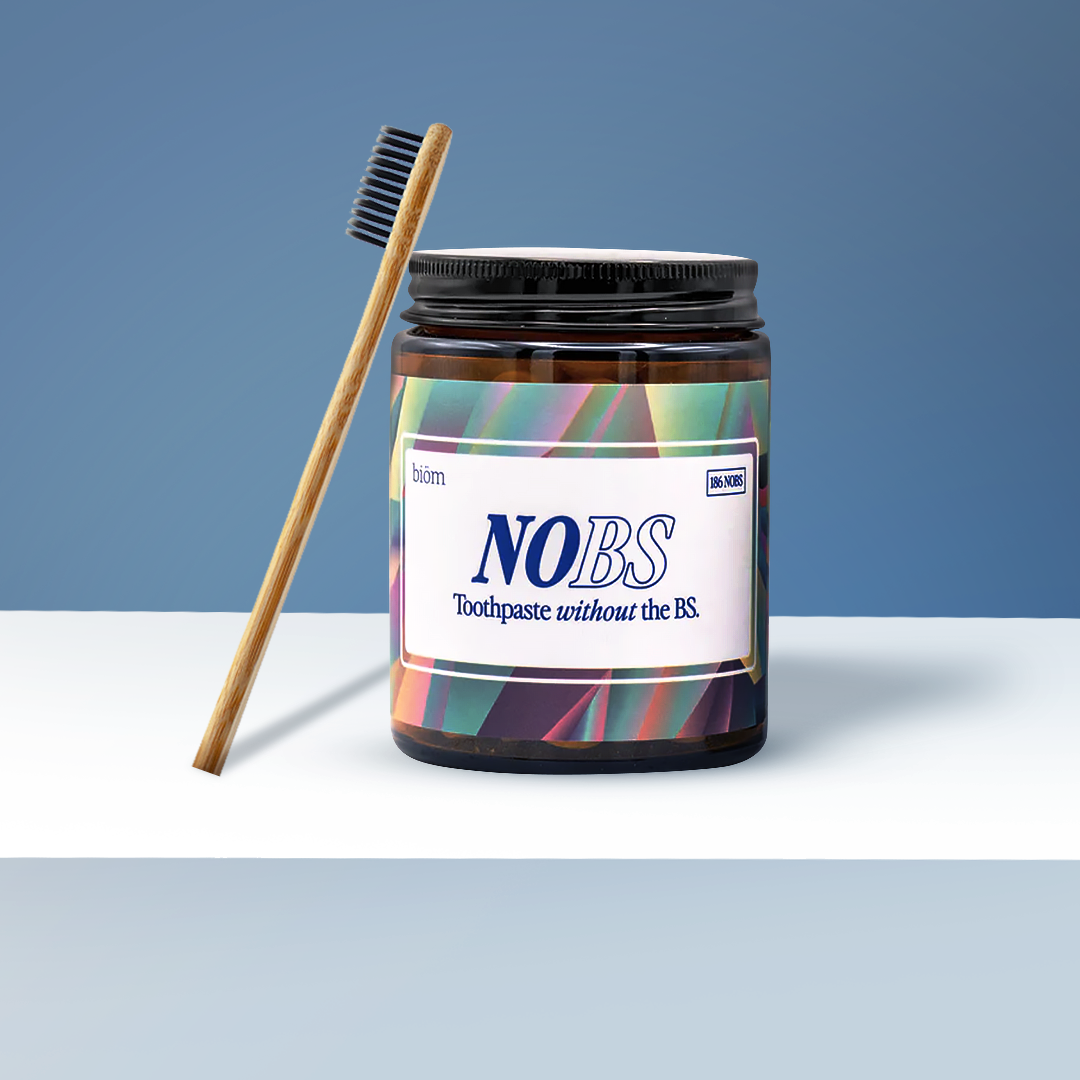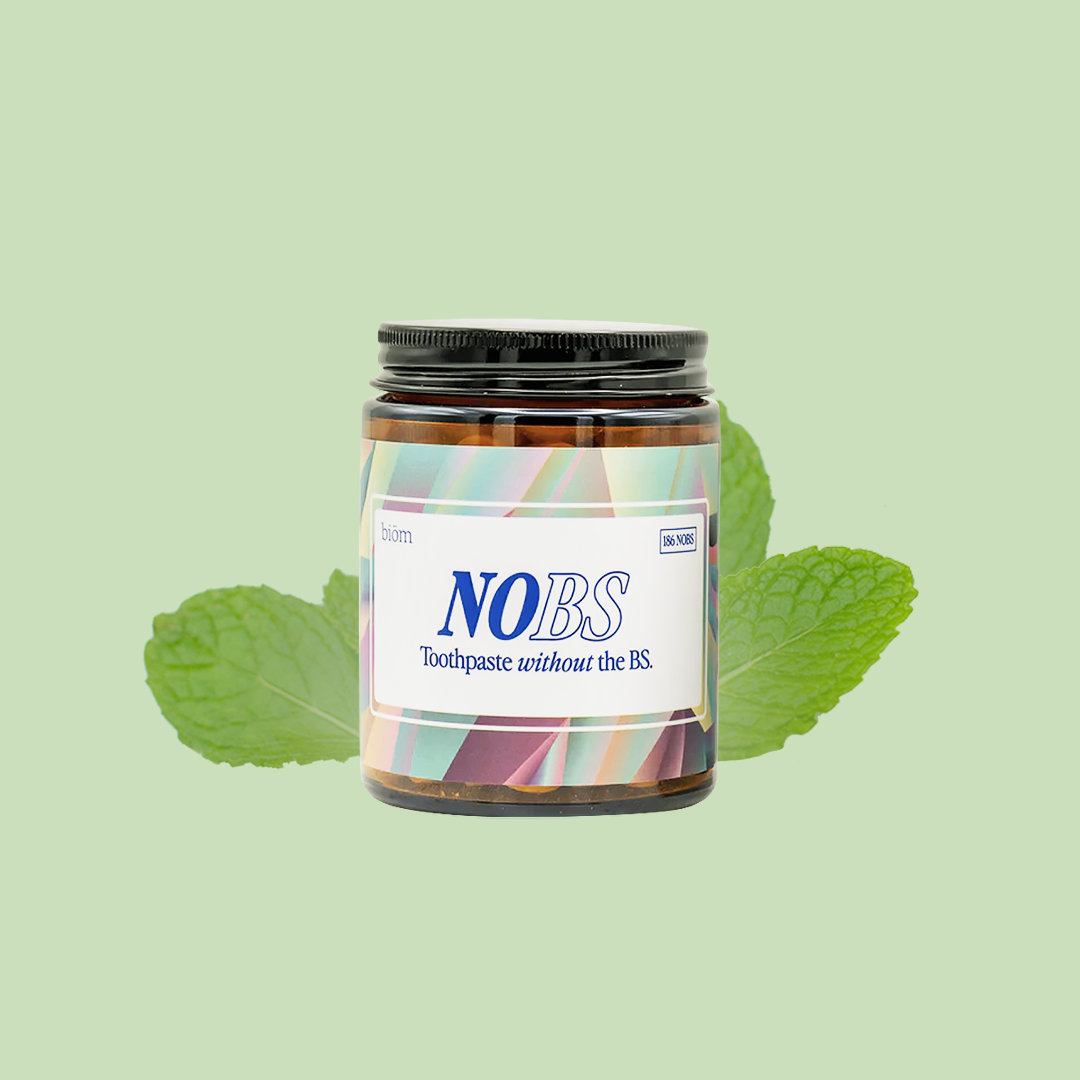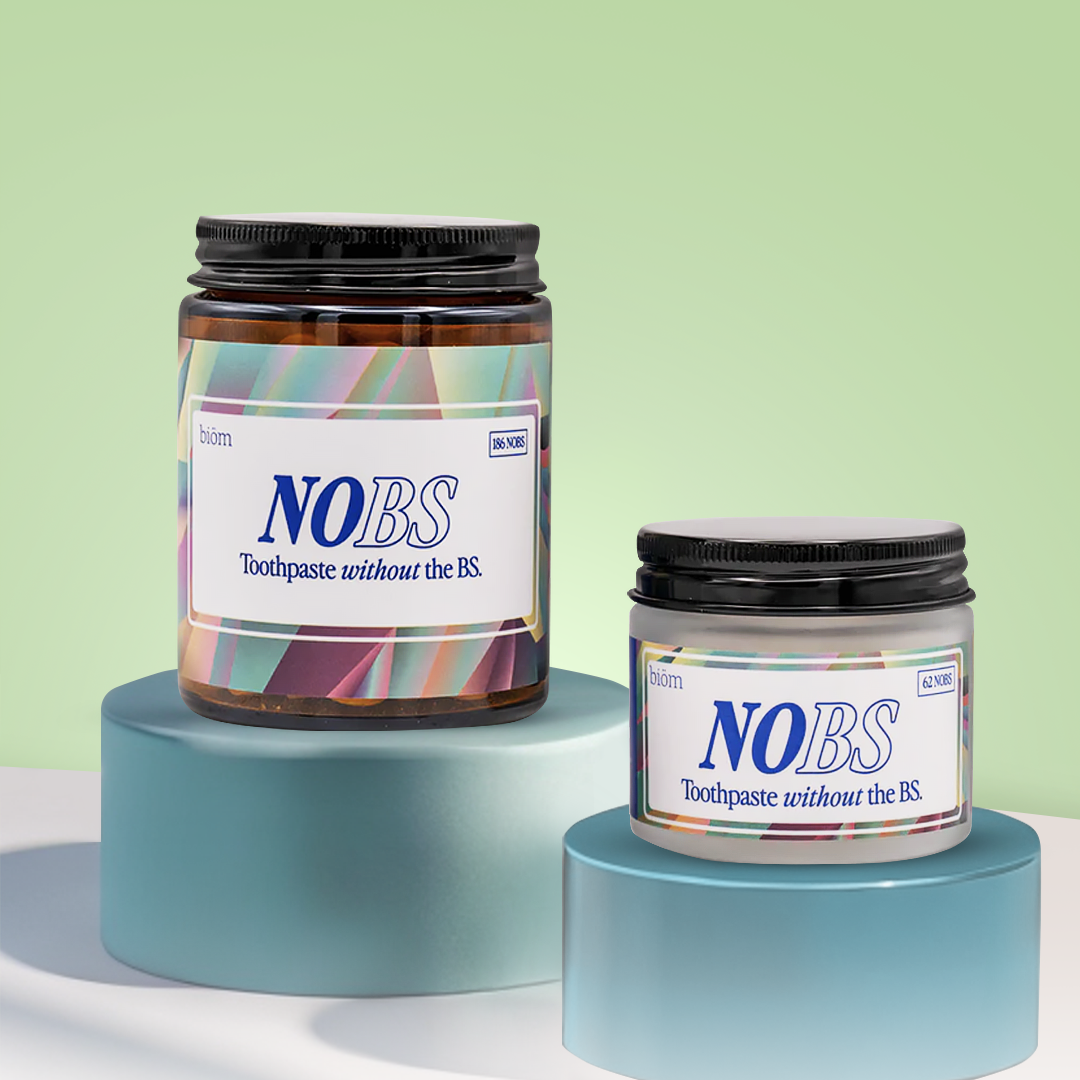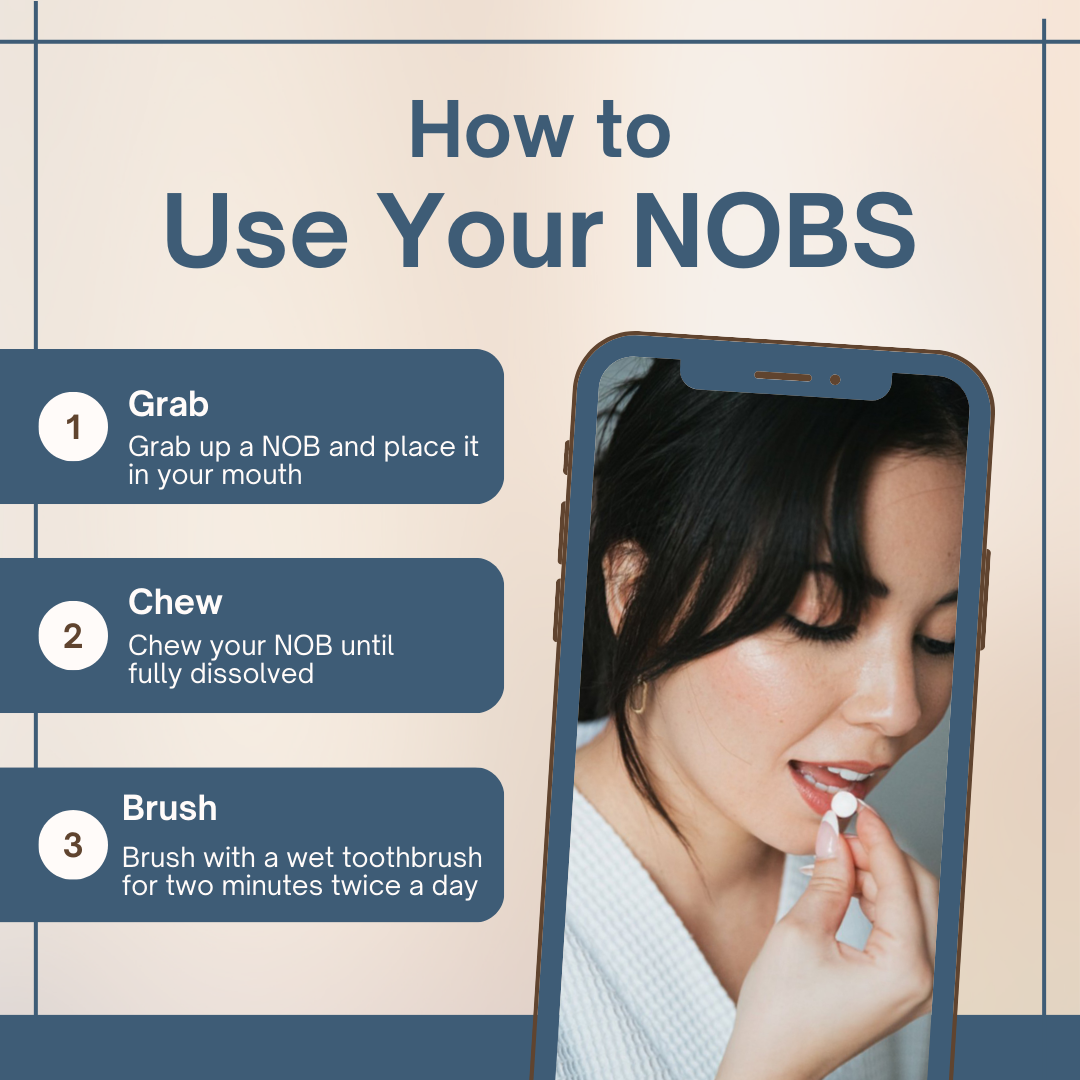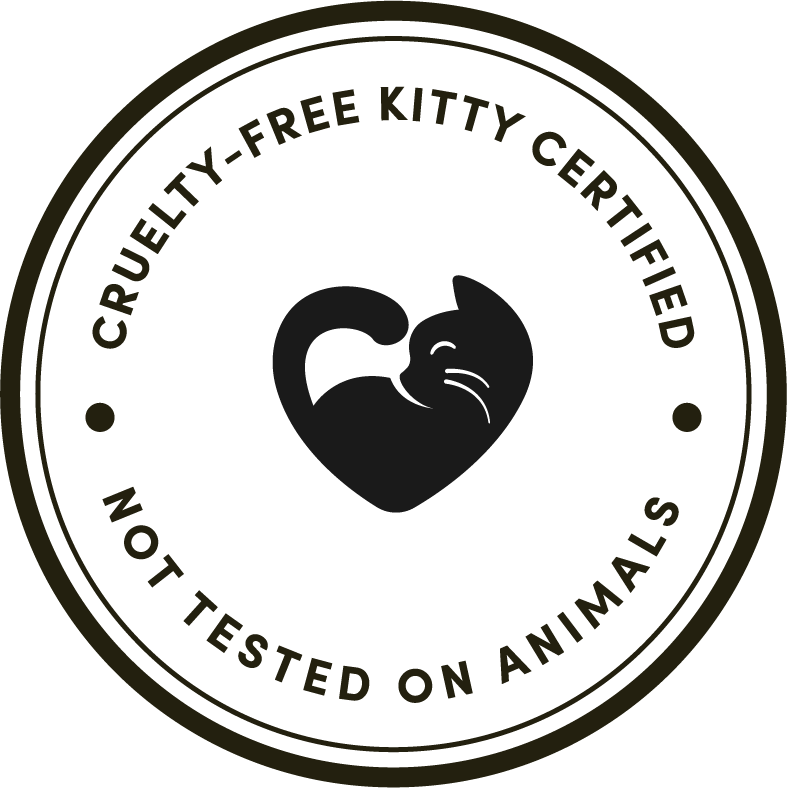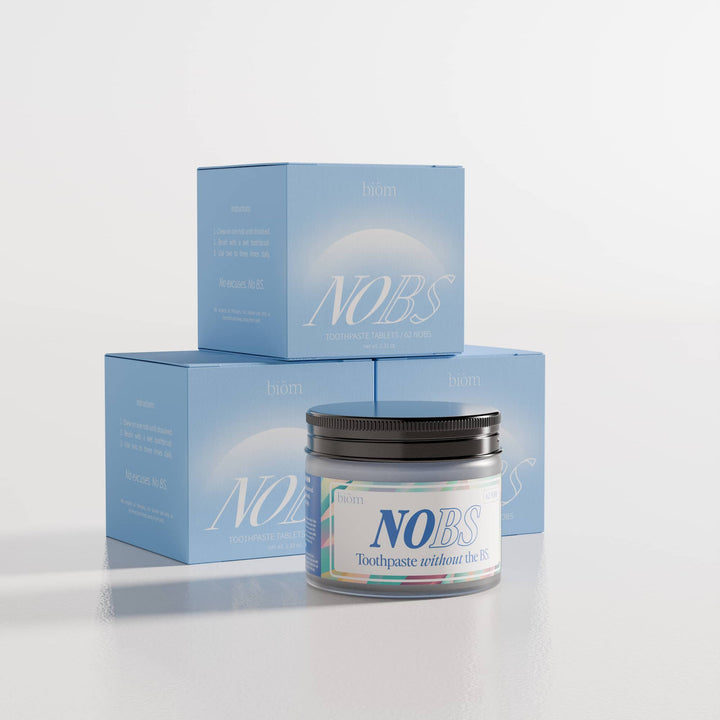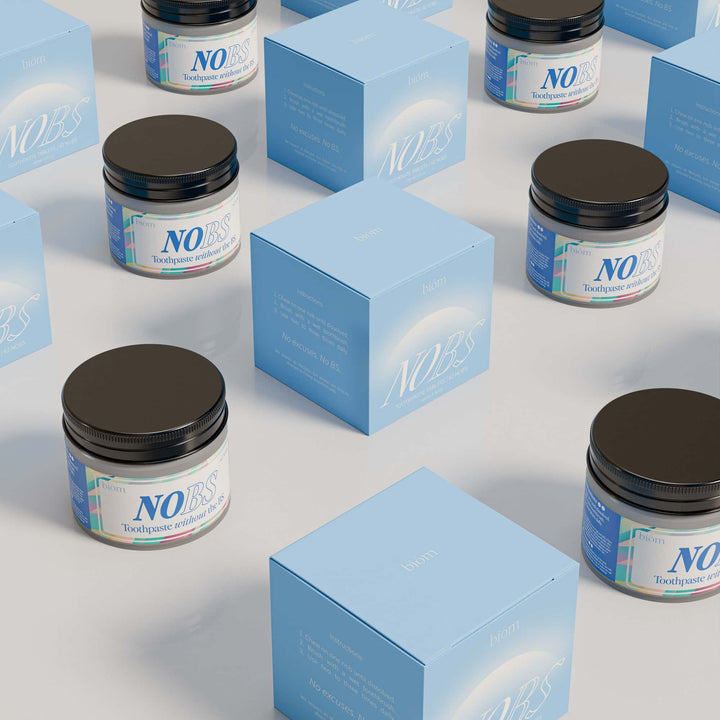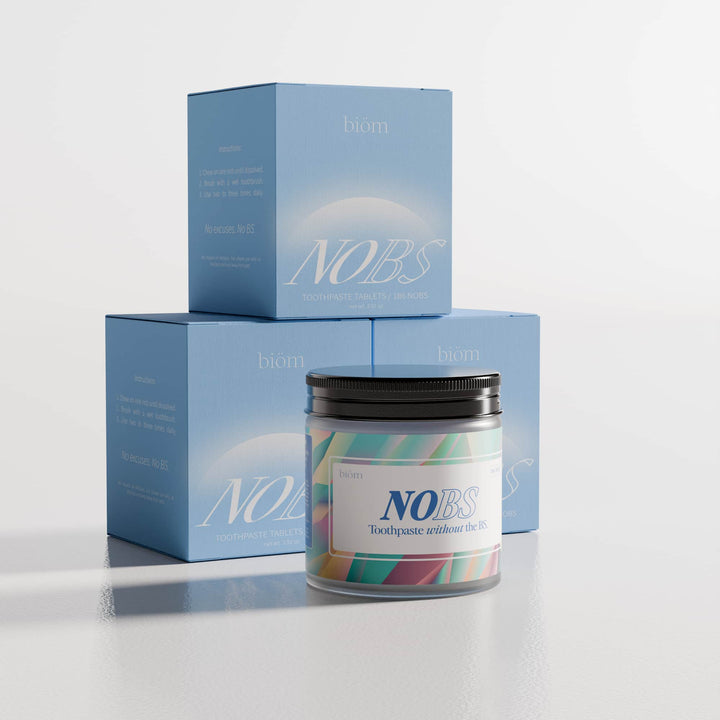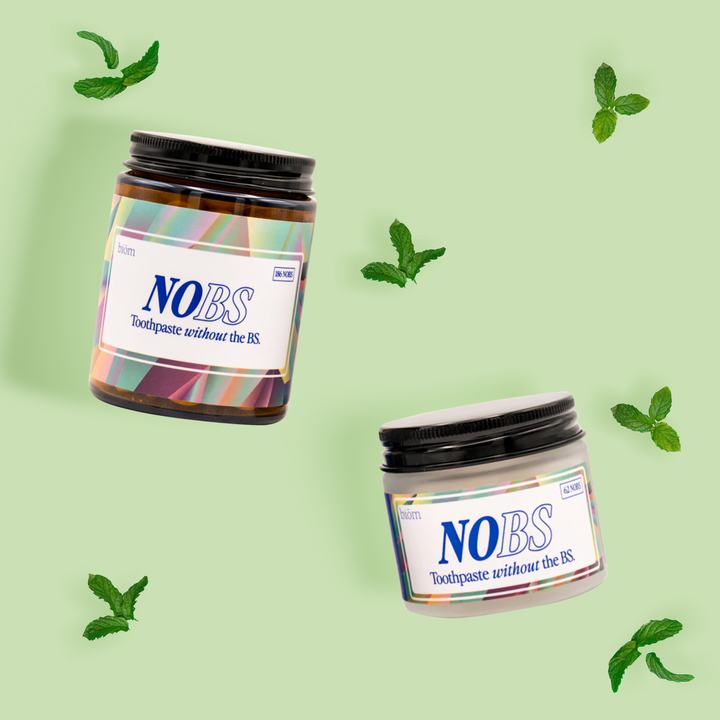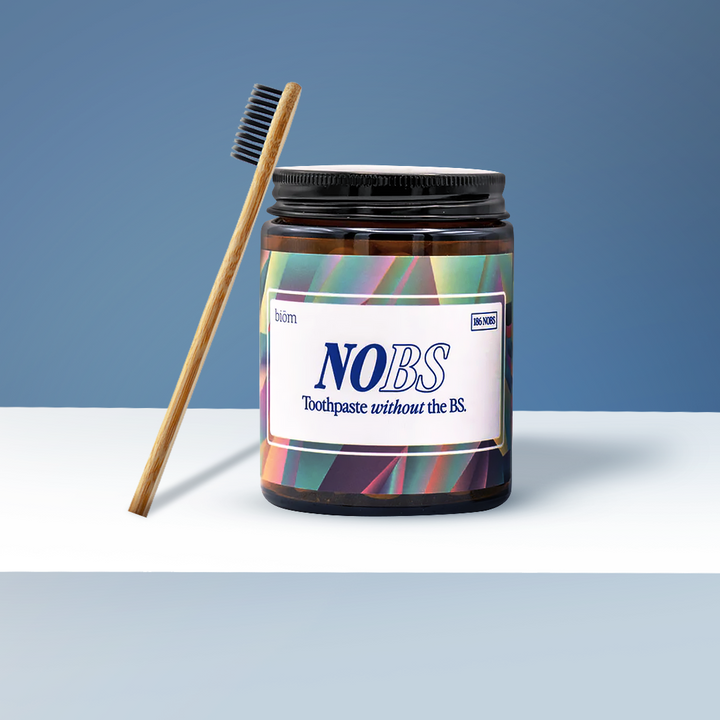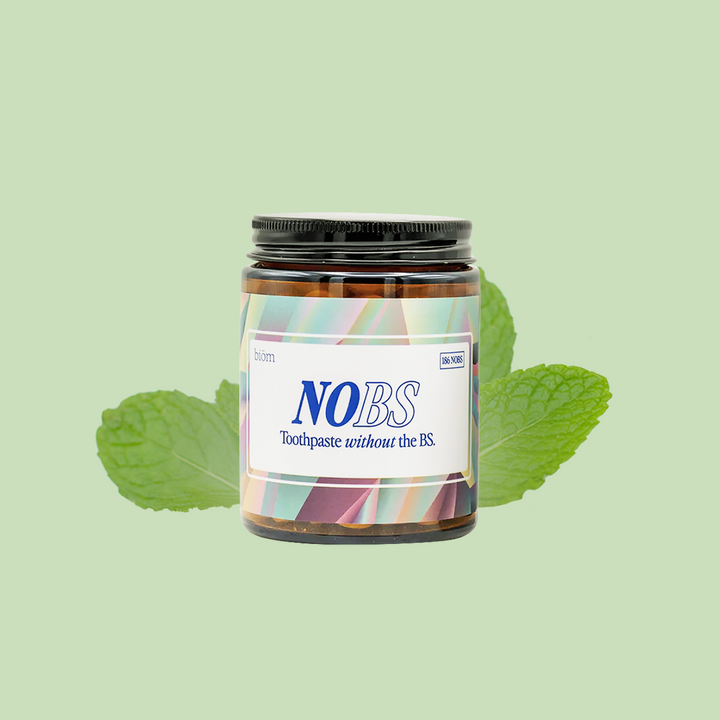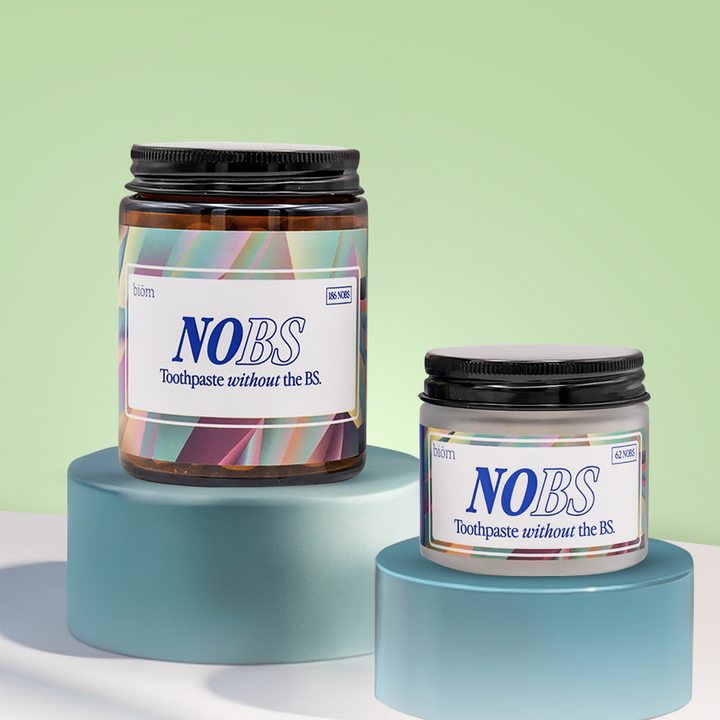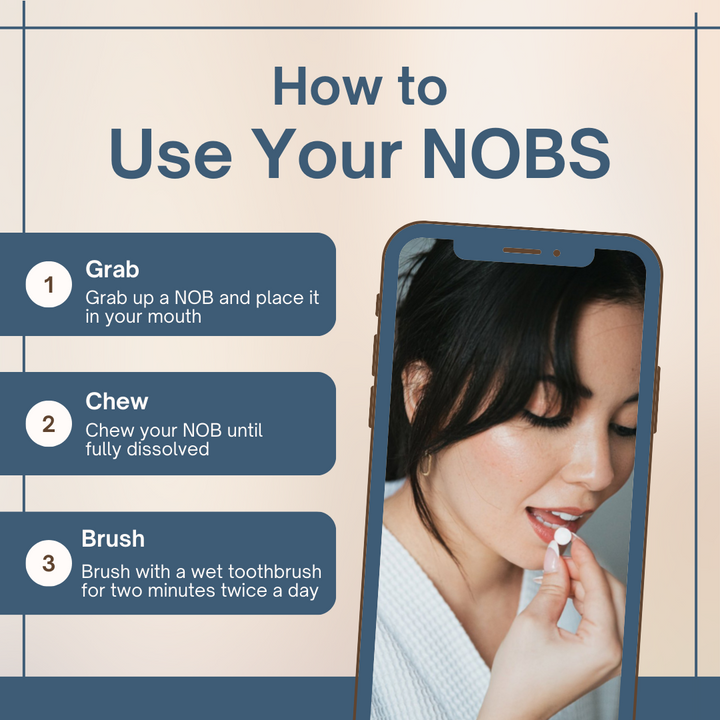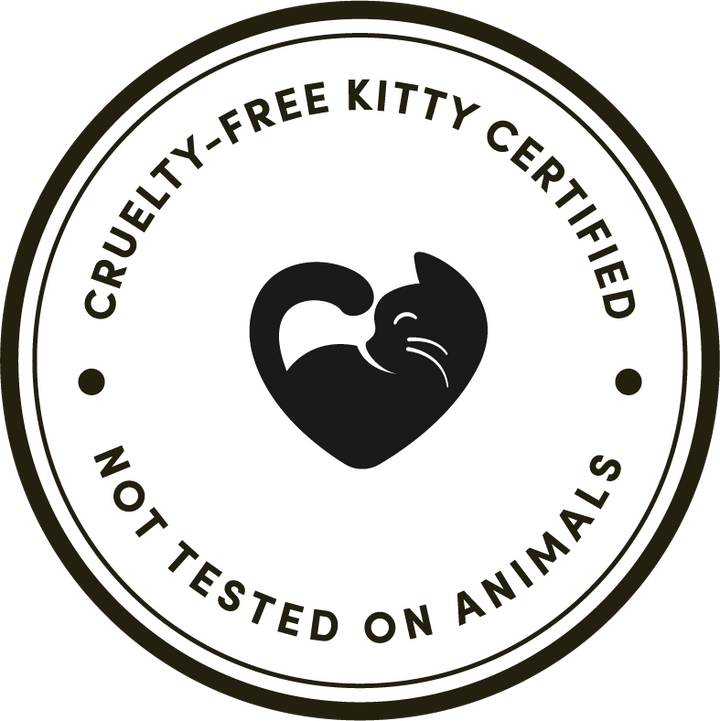How to Oil Pull Teeth
To start oil pulling, first choose an oil - coconut, sesame, or sunflower oil are popular choices due to their antimicrobial properties and relatively pleasant taste. Start with about one tablespoon of oil, which is enough to swish around comfortably without overwhelming your mouth.
Ideally, you would oil pull first thing in the morning on an empty stomach to maximize its potential benefits. Then, swish the oil around in your mouth for about 15-20 minutes, making sure the oil reaches all of the hard-to-reach areas.
Finally, spit out the oil into a trash can and follow up by rinsing out your mouth and brushing your teeth. While oil pulling has its advocates and can be a beneficial practice for some people, it's important for us to remember that it's a supplement to our regular oral care routine and doesn't replace brushing with nano hydroxyapatite toothpaste or flossing with expandable floss.
In this article, I'll explain everything you need to know about how to oil pull teeth.
So, whats oil pulling?
Oil pulling is a traditional Ayurvedic practice for improving oral hygiene and for spiritual benefits.
It involves swishing oil in your mouth for about 20 minutes to remove bacteria and dislodge buildup between your teeth. Back then, this process was used to treat bad breath and gum disease and, while less common now, continues to be practiced today for similar benefits.
While oil pulling was originally conducted with sesame and sunflower oil, virgin coconut oil is more common now. Any oil, including sunflower oil or olive oil, can be used for oil-pulling therapy, but coconut oil has been popularized due to its high lauric acid content and pleasant taste.
Just remember, to maximize the oral health benefits of oil pulling, we recommend brushing with toothpaste tablets, flossing with expandable floss, and using a tongue scraper daily.
Where does oil pulling come from?
Oil pulling originates from Ayurveda, an ancient system of medicine that has been practiced in India for thousands of years. This traditional health practice is mentioned in the Charaka Samhita, one of the key texts of the Ayurvedic tradition, where it is referred to as "Kavala" or "Gandusha."
Ayurveda emphasizes balance in bodily systems and uses diet, herbal treatment, and yogic breathing to maintain or improve health. Oil pulling is believed to promote oral hygiene, balance the doshas (body energies), and improve overall health according to Ayurvedic principles.
While oil pulling is an ancient practice with many practitioners, please note that the American dental Association does not endorse it.
How does oil pulling work?
Oil pulling works by dislodging harmful bacteria from between your teeth before it has a chance to organize into plaque.
Essentially, the oil helps emulsify the bacteria and debris in your mouth, allowing it to be spit out after ~20 minutes. Clinical and diagnostic research suggests that this practice supports a healthy oral microbiome.
That being said, it takes about 20 minutes for oil pulling to have a significant impact on your oral hygiene. Therefore, it is one of the more labor-intensive oral health practices and may not fit into your daily overall health routine.
Benefits of Oil Pulling

Proponents of oil pulling suggest that it has benefits that include:
-
Reducing oral bacteria associated with cavities and gingivitis
-
Removing plaque buildup along the gumline
-
Whitening teeth
-
Eliminating bad breath
-
Preventing periodontal disease progression
-
Lowering risk of tooth decay
These potential benefits largely come from oil pulling’s presumed ability to reduce bacterial load in your mouth. Plus, it's gentle enough to do with crowns and fillings.
However, there is no academic consensus on the benefits of oil pulling due to the lack of clinical research.
Bacteria
There is some evidence that oil pulling may reduce the number of bacterial colonies living in your mouth.
However, this is a newly evolving field of research and more evidence is required to fully understand the impact.
Bad Breath
By reducing the number of bacterial colonies in your mouth, oil pulling may have some impact to reduce the incidence of halitosis.
Plaque Buildup
Oil pulling is an effective treatment against plaque. In fact, one study found that "both coconut oil and sesame oil can be used for oil-pulling therapy with the aim of plaque regrowth inhibition".
Interestingly, this study also found that this same mechanism had a positive impact on tooth staining as well.
Gingivitis and Inflammation
Preliminary evidence shows that oil pulling may help fight gingivitis by reducing your plaque index. However, it is unclear how significant these results are and whether they can be replicated.
Side Effects of Oil Pulling
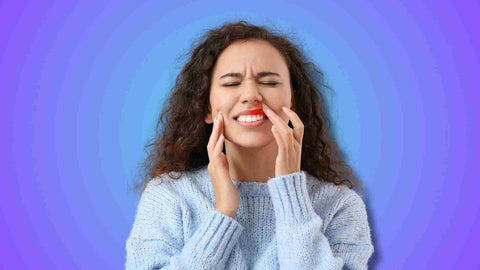
Oil pulling is generally considered safe although it may lead to some side effects or dangers in certain individuals.
These side effects can include nausea, upset stomach, or an unpleasant taste in the mouth, especially if you do not spit out the oil properly after swishing. Some people may also experience jaw fatigue or soreness from the prolonged swishing motion required when they practice oil pulling.
Additionally, there have been rare reports of lipoid pneumonia, a condition caused by inhaling small amounts of oil into the lungs, although this risk is extremely low when oil pulling is done correctly.
Let's walk through some of the oil pulling side effects in greater detail.
Nausea
Swallowing oil during oil pulling can lead to feelings of nausea, particularly if you accidentally ingest a significant amount. This sensation may occur due to the texture or taste of the oil or just from your stomach's reaction to the oil.
To prevent any discomfort, it's crucial to spit out the oil thoroughly after swishing. Further, you can start by swishing with a small amount of oil before gradually progressing to a larger amount of oil and a longer duration of oil pulling. Finally, you can choose to start with a lighter oil that has a milder taste like sunflower oil.
Upset Stomach
Along with nausea, ingesting oil during oil pulling may cause an upset stomach for some people. This discomfort can manifest as abdominal pain, bloating, or indigestion.
To prevent this from happening, make sure that you fully spit out all of the oil after oil pulling and do your best to avoid swallowing it. You can also rinse your mouth out thoroughly with water after oil pulling to remove any residual oil that may otherwise cause stomach discomfort.
Jaw Fatigue or Soreness
Unfortunately, the repetitive swishing motion required during oil pulling can lead to jaw fatigue or soreness, especially if you perform it for an extended period. This discomfort may arise from overuse of the jaw muscles and typically resolves with rest.
Taking breaks or reducing the duration of oil pulling sessions can help alleviate this issue. Additionally, you can try gently massaging the jaw muscles before and after oil pulling to help prevent fatigue and soreness.
Lipoid Pneumonia
In rare cases, inhaling small amounts of oil into the lungs during oil pulling may lead to lipoid pneumonia, a type of pneumonia caused by lipid or oil aspiration., a type of pneumonia caused by lipid or oil aspiration. While the risk is minimal when oil pulling is performed correctly, it's essential to be cautious and avoid inhaling the oil.
To minimize the risk of lipoid pneumonia, you should ensure you're using the proper technique for oil pulling, which involves swishing the oil around your mouth and then spitting it out, rather than inhaling or swallowing it.
Allergic Reactions
Individuals with allergies to certain oils, such as coconut or sesame oil commonly used for oil pulling, may experience allergic reactions. Symptoms can include itching, rash, or swelling of the mouth or throat. If this sounds like you, make sure to choose an oil that you tolerate well and discontinue use if any allergic symptoms occur.
How to do Oil Pulling at Home

To oil pull effectively, follow these steps:
-
First choose your oil: Select a high-quality, edible oil such as coconut oil, sesame oil, or sunflower oil. Coconut oil pulling is popular due to its pleasant taste and potential antibacterial properties, but oil pulling with coconut oil isn't the end-all-be-all of this practice.
-
Measure the oil: Take about 1-2 tablespoons of oil and put it in your mouth.
-
Swish the oil: Swish the oil around in your mouth for about 15-20 minutes. Be sure to pull the oil through your teeth and around your gums. Avoid gargling or swallowing the oil.
-
Spit out the oil: After 15-20 minutes, spit the oil out into a trash can or tissue. Don't spit it into the sink as it could solidify and clog your drain over time.
-
Rinse your mouth: Rinse your mouth thoroughly with warm water or salt water to remove any remaining oil residue.
-
Don't forget to brush your teeth: To avoid improper, poor oral hygiene, be sure to follow up with your regular oral hygiene routine, including brushing with toothpaste tablets and flossing.
Repeat this process daily or several times a week for best results. Most people practice oil pulling in the morning before eating instead of at night.
In summary, oil pulling is an effective, easy-to-implement practice that can have great benefits for your dental health.
Can oil pulling replace brushing and other dental hygiene practices?
Oil pulling is not recommended as a replacement for brushing or other dental hygiene practices by the American Dental Association (ADA).
While oil pulling may offer some oral health benefits, it is still best to maintain regular dental hygiene practices like brushing and flossing.
Additionally, using an alcohol-free mouthwash is still highly recommended as it reduces bacteria and freshen breath without causing the dryness that alcohol-based rinses may induce.
It complements brushing by reaching areas in the mouth that brushing might miss.
Overall, oil pulling can be an additional step, but it is not a substitute for using an effective mouthwash that promotes overall gum and dental health.
Does oil pulling whiten teeth?
According to the American Dental Association (ADA), there are no reliable scientific studies proving that oil pulling can whiten teeth or significantly improve oral health.
While some claim that swishing oils like coconut oil helps with teeth whitening, the ADA points out that these effects are not supported by scientific research.
Oil pulling may reduce bacteria and plaque, but it does not contain ingredients that are proven to whiten teeth.
For more effective and reliable whitening, dentists recommend using products designed for that purpose, such as baking soda toothpaste, whitening strips or professional treatments.
Why is oil pulling done on an empty stomach?
Oil pulling is done on an empty stomach as according to Ayurvedic tradition, this allows the oil to thoroughly bind with bacteria present in your mouth without interference from food particles.
When your stomach is empty, there are fewer substances in your mouth that could diminish the effectiveness of the oil you're pulling with.
Additionally, swishing oil in your mouth before eating or drinking anything in the morning can be a gentle, refreshing way to kickstart your oral hygiene routine for the day. Just don't forget to tongue scrape and brush your teeth afterward!
Can I oil pull after eating?
While you can oil pull after eating if you prefer, oil pulling is an ancient Ayurvedic medicine practice typically conducted first thing in the morning on an empty stomach instead of oil pulling at night. In the Ayurvedic tradition, this timing is thought to allow the oil to thoroughly bind with toxins and bacteria present in the mouth without interference from food particles.
However, if oil pulling immediately after eating is unavoidable for you, you should wait at least an hour to allow the majority of food particles to clear from your mouth. While oil pulling after eating may not be as effective as doing it on an empty stomach, it can still help remove some bacteria and food debris from the oral cavity.
That said, while oil pulling is a beloved holistic health practice, it's important for us to note that there is not much clinical evidence behind the benefits of oil pulling from a dental health perspective.
When should you oil pull, and how often?
You should oil pull daily on an empty stomach, ideally first thing in the morning instead of at night before eating or drinking anything. Practitioners generally recommend this timing because it ensures that you are not swishing food particles or debris along with the oil, allowing for a more effective cleaning action.
After oil pulling, you can proceed with your regular oral hygiene routine, such as brushing your teeth and flossing. Remember, oil pulling is meant to complement your oral hygiene practices, not replace them.
That said, if oil pulling immediately after eating is unavoidable for you, you should wait at least an hour to allow the majority of food particles to clear from your mouth. While oil pulling after eating may not be as effective as doing it on an empty stomach, it can still help remove some bacteria and food debris from the oral cavity.
Tips for a Great Oil Pulling Experience
For a comfortable oil pulling experience, consider these 5 tips:
-
Choose the Right Oil: Start with a high-quality, cold-pressed oil. Coconut oil is popular due to its pleasant taste and antimicrobial properties, but sesame and sunflower oils are traditional choices that are also effective.
-
Start Small: If you're new to oil pulling, try starting with a smaller amount of oil (about 1 teaspoon) and gradually increase to a tablespoon as you become more comfortable with it.
-
Timing is Key: Practice oil pulling first thing in the morning on an empty stomach for best results.
-
Duration Matters: Aim for 15-20 minutes of swishing. If this feels too long initially, you can start with shorter periods and gradually increase the time. The goal is to allow enough time for the oil to "pull" bacteria and toxins from your mouth without causing jaw fatigue.
-
Don't Swallow: The oil will collect bacteria from your mouth, so it's important not to swallow it. Spit it out in the trash to avoid clogging your sink.
Finally, make sure you brush and floss as usual after oil pulling. This ensures that any loosened plaque and bacteria are completely removed from your mouth. Plus, since oil pulling cannot remineralize teeth, brushing with nano hydroxyapatite toothpaste will help prevent tooth decay.
Should I try oil pulling?
You can try oil pulling, though most people prefer to use natural mouthwash instead. This is because, in comparing mouthwash vs oil pulling, mouthwash is convenient and effective at fighting bad breath.
While scientific evidence supporting oil pulling benefits is limited and mixed, many find it a beneficial addition to their daily routine. If you're curious and looking for a complementary approach to your existing oral care regimen, oil pulling can be a safe practice to experiment with, using oils like coconut, sesame, or sunflower oil.
At the same time, it's important to continue with your regular dental hygiene practices, including brushing and flossing.
Should you avoid oil pulling?
You might want to consider avoiding oil pulling if you have certain dental issues or concerns.
For example, even though it's safe to do oil pulling with crowns and fillings, if you have a history of dental fillings that are loose or dental appliances that could be affected by the swishing action, you should check in with your dentist beforehand.
Additionally, if you have a history of oral sensitivity or allergic reactions to the oils used in oil pulling, you should proceed with caution or simply avoid the practice altogether.
Other Tips for Great Oral Hygiene
In addition to incorporating tongue scraping into your oral care routine, there are several other tips you can follow to improve your oral health.
Brush With Nano Hydroxyapatite Toothpaste
Brushing with nano hydroxyapatite toothpaste is beneficial for strengthening tooth enamel, remineralization, and preventing and reversing tooth decay.
Nano hydroxyapatite is a natural mineral that makes up the majority of our tooth structure and has been shown to remineralize enamel, making it more resistant to acid attacks from bacteria.
By using toothpaste with nano hydroxyapatite, you can help protect your teeth from decay and maintain a healthy smile.
Use Expanding Floss Daily
Using expanding floss daily is essential for removing plaque and food particles from between your teeth and along the gumline. Expanding floss is designed to expand when it comes into contact with saliva, allowing it to clean more effectively between tight spaces and beneath the gumline.
By flossing daily, you can reduce your risk of demineralization and tooth decay, gum issues, and bad breath.
Avoid Smoking and Consuming Tobacco Products
Avoiding smoking and consuming tobacco products is crucial for maintaining good oral health. Tobacco use can lead to a wide range of dental problems, including stained teeth, bad breath, gum disease, and oral cancer.
Quitting smoking and avoiding other tobacco products can significantly improve your oral health and reduce your risk of developing serious dental issues in the future.
Swap Out Your Toothbrush Every 3 Months
Swapping out your toothbrush every three months is important for maintaining effective oral hygiene. Over time, toothbrush bristles can become worn and frayed, making them less effective at removing plaque and debris from your teeth and gums.
By replacing your toothbrush regularly, you ensure that you're using a tool that can clean your teeth effectively and help prevent oral health problems down the line.
Frequently Asked Questions
Should you brush your teeth before or after oil pulling?
You should brush your teeth after oil pulling to ensure that any remaining oil residue is removed and to maintain overall oral hygiene. Brushing after oil pulling helps eliminate bacteria and plaque effectively. Remember to rinse your mouth thoroughly with water before brushing to remove any lingering oil. This sequence helps maximize the benefits of both oil pulling and brushing.
What kind of oil do you use for oil pulling?
For oil pulling, you can use various types of edible oils, with coconut oil and sesame oil being the most commonly used. These oils are believed to have antimicrobial properties and are often preferred for their mild taste. However, other oils such as sunflower oil or olive oil can also be used for oil pulling. It's essential to choose a high-quality, edible oil and ensure that it is safe for oral use.
How often should you oil pull teeth?
How often you should oil pull your teeth depends on your individual preferences and oral health needs. Some people find benefits from oil pulling daily, while others may prefer to do it a few times a week. It's important to listen to your body and monitor any changes in your oral health or overall well-being. If you're new to oil pulling, you may want to start with a lower frequency and gradually increase as you become more comfortable with the process. Ultimately, there's no one-size-fits-all answer, so it's best to find a frequency that works best for you and your oral hygiene routine.
Why don't dentists like oil pulling?
Dentists generally do not like oil pulling because there is limited scientific evidence to support its effectiveness for improving oral health. While some proponents claim benefits such as reducing harmful bacteria and improving gum health, these claims are not well-supported by research. Additionally, oil pulling is not a substitute for regular oral hygiene practices such as brushing and flossing, which are essential for maintaining good oral health. It's important to consult with your dentist for personalized advice on oral care practices.
Can oil pulling damage teeth?
Oil pulling, when done correctly and in moderation, is generally safe. However, there's a risk of enamel erosion if done vigorously or for too long, due to prolonged exposure to acidic substances in some oils. Neglecting traditional oral hygiene practices like brushing and flossing while oil pulling could lead to dental issues like plaque buildup and cavities. Therefore, it's best to consider using alkaline mouthwash as an alternative for maintaining oral hygiene, especially if concerned about oil pulling risks. Mouthwash offers similar benefits without risking enamel erosion. Consult a dental professional for personalized oral care advice.
Are there negatives to oil pulling?
Yes, there are potential negatives to oil pulling. While some people may experience benefits such as improved oral hygiene and fresher breath, others may encounter mild side effects or discomfort. These can include nausea, upset stomach, jaw fatigue, allergic reactions to specific oils, or dental issues if regular oral hygiene practices are neglected. Additionally, there's a risk of enamel erosion if the oil pulling process involves swishing the oil vigorously or for an extended period, which could weaken tooth enamel over time. Therefore, it's best to consider using alkaline mouthwash as an alternative for maintaining oral hygiene, especially if concerned about oil pulling risks. Mouthwash offers similar benefits without risking enamel erosion. Consult a dental professional for personalized oral care advice.
Is it better to oil pull before or after eating?
It’s generally better to oil pull before eating, preferably in the morning, as it helps remove bacteria and toxins that accumulate overnight. Doing it on an empty stomach enhances its effectiveness in cleansing your mouth. However, you can also oil pull after eating if you want to freshen your breath or clean your mouth further.
When is the best time to do oil pulling?
The best time to do oil pulling is in the morning on an empty stomach before brushing your teeth or eating. This timing helps remove overnight bacteria and toxins effectively. You can also oil pull at night or after meals if you want additional oral cleansing.
Can we drink water immediately after oil pulling?
Yes, you can drink water immediately after oil pulling, but it’s better to rinse your mouth thoroughly with water first to remove any residual oil. This ensures that no toxins or bacteria removed during oil pulling remain in your mouth. Drinking water afterward can also help refresh and hydrate you.
Why is oil pulling not recommended?
Oil pulling is not recommended for everyone because it can cause jaw discomfort, especially if done for extended periods. It may also lead to mild side effects like nausea or an upset stomach if the oil is accidentally swallowed. Additionally, while oil pulling can support oral health, it should not replace regular brushing, flossing, or professional dental care.


